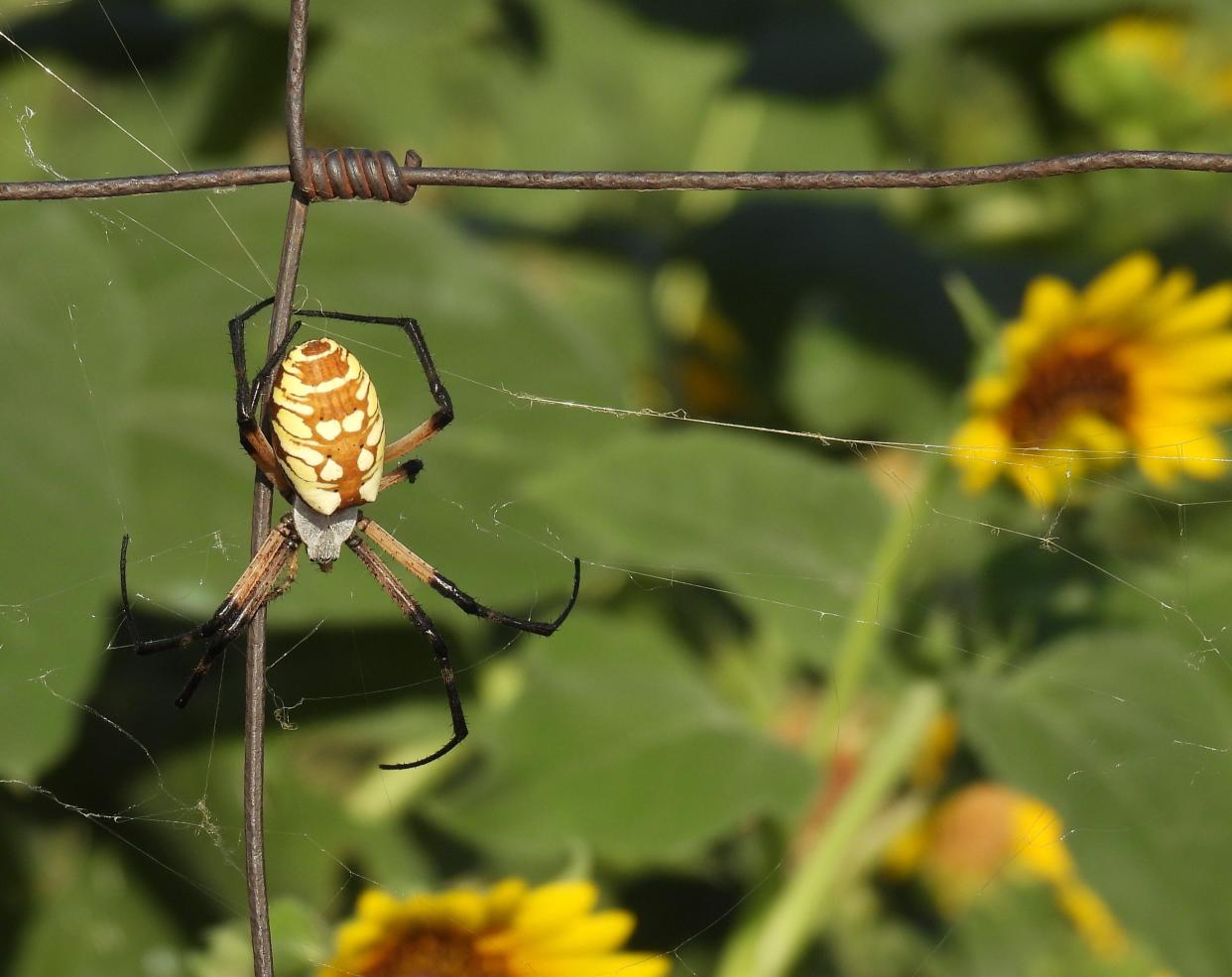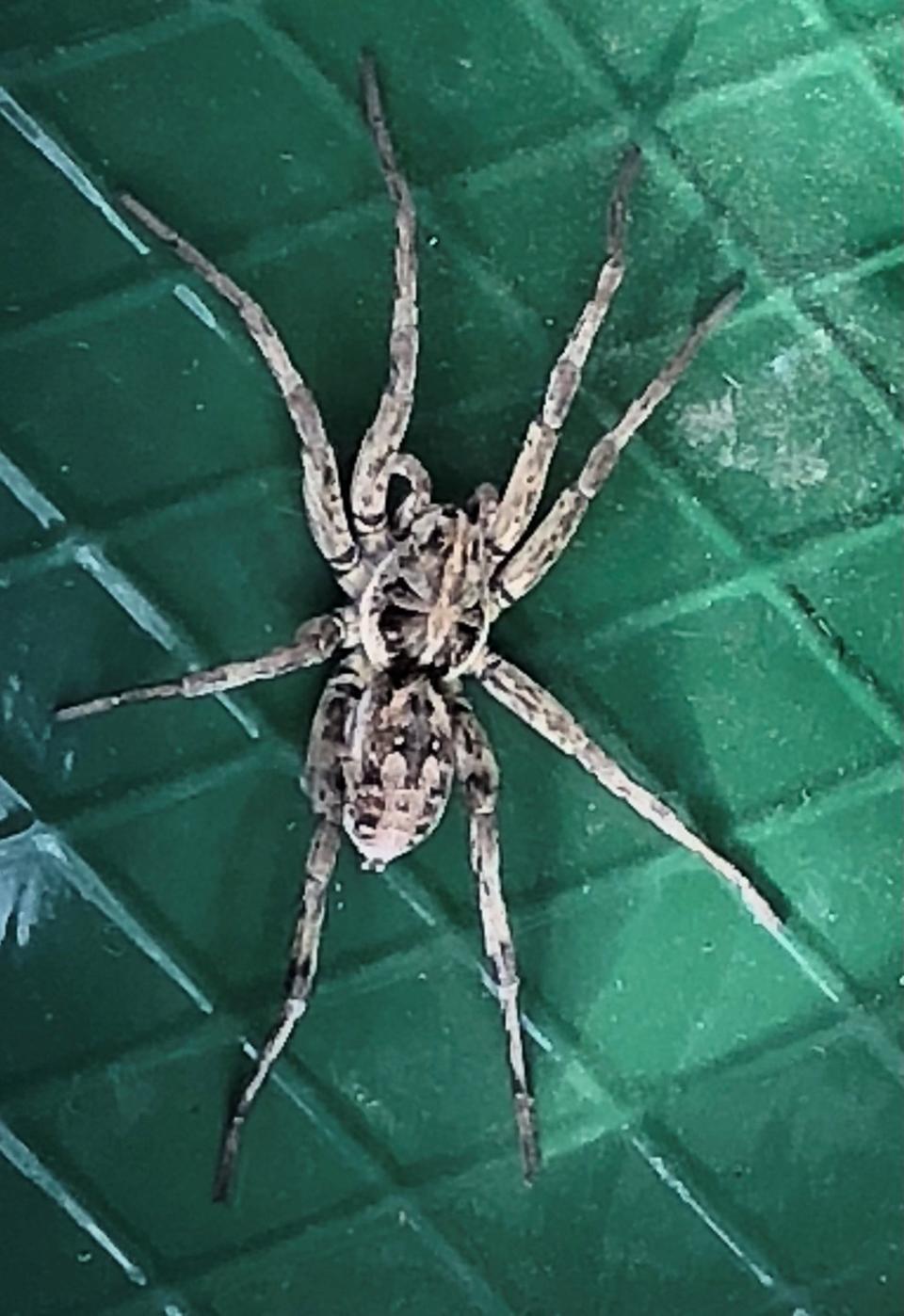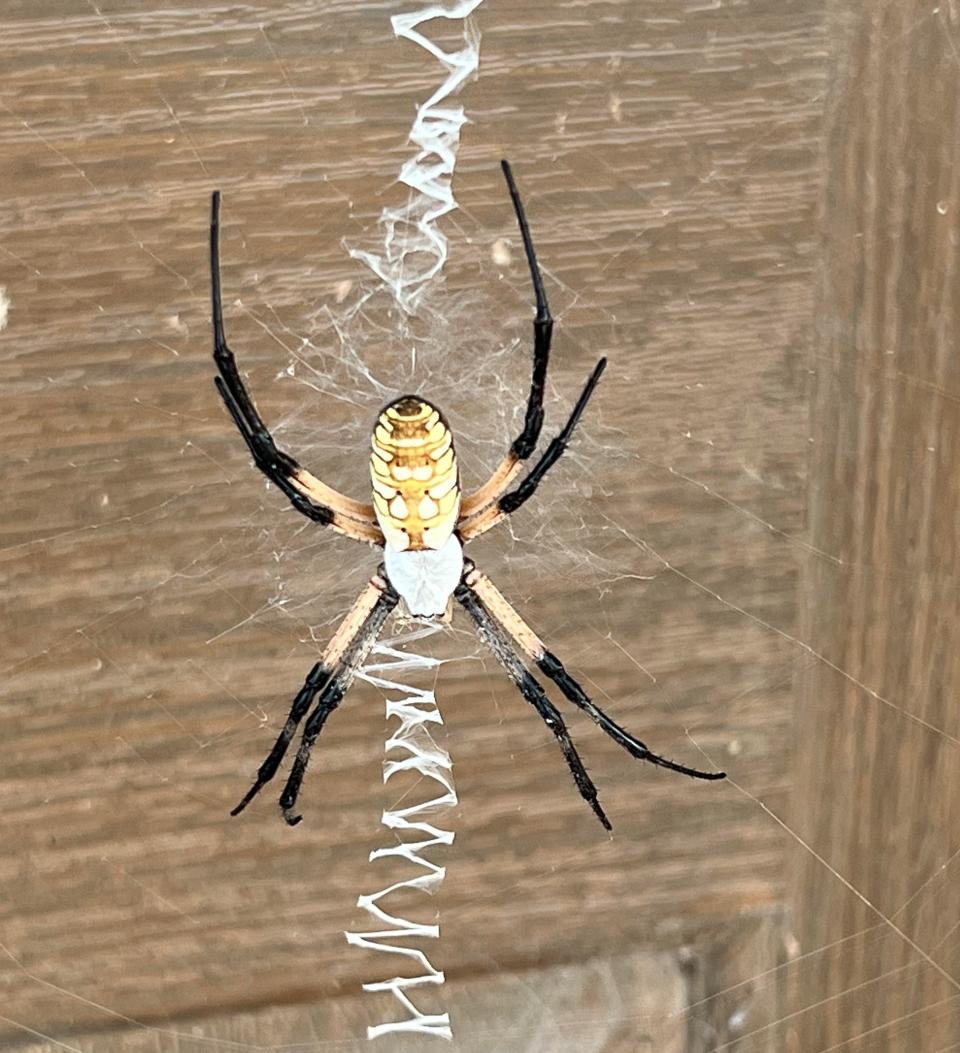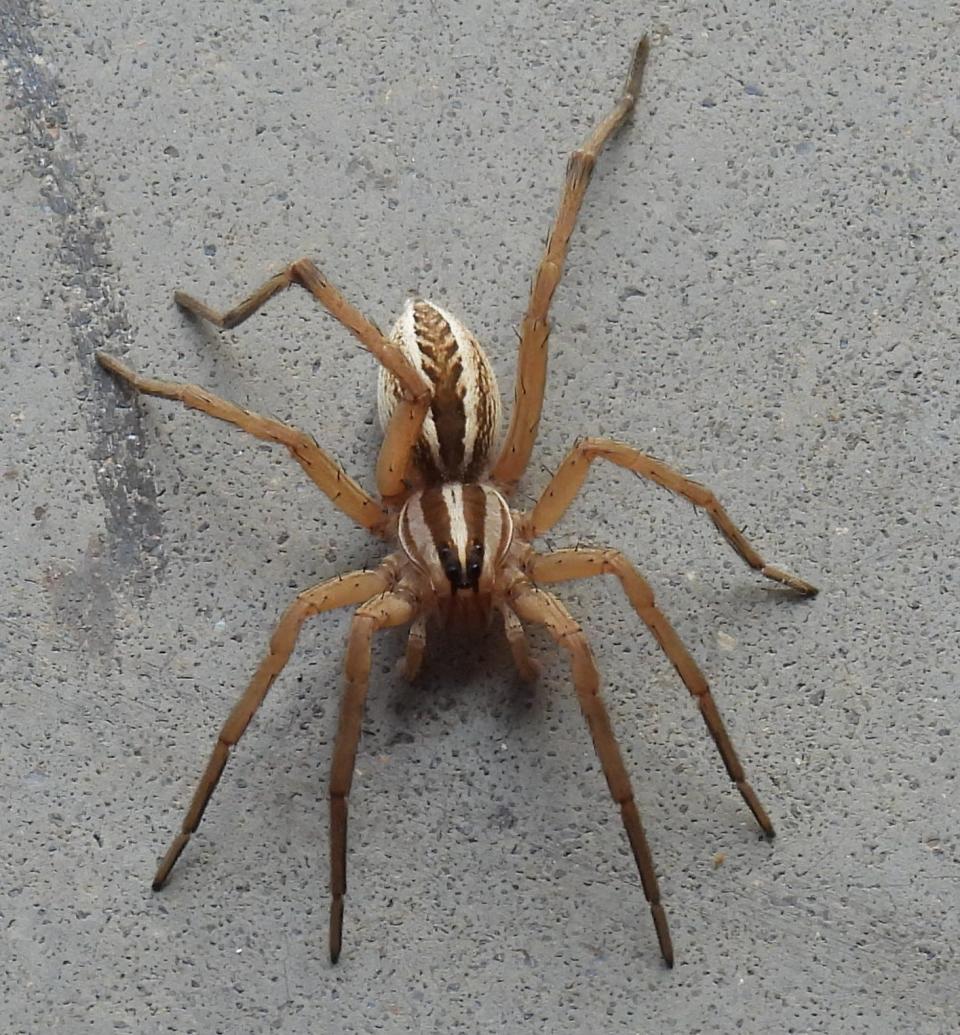Spectacular spiders really are the good guys

They’re described as yucky, creepy, or frightening and, according to a certain nursery rhyme, one of them "scared little Miss Muffet away,” but once you get to know them, you’ll realize that spiders have an important and beneficial role in nature.
While it is true that our eight-legged friends are venomous; of the approximately 4,000 spider species in North America, only two types of spiders (the Black Widow and Brown Recluse) are of notable concern to humans. Most spiders unobtrusively conduct their daily business and, as a group, are often underappreciated for their efforts.
Built to last
These fascinating animals possibly evolved from a group of marine arthropods even before the insects. Several readily observed characteristics distinguish spiders from insects. As previously mentioned, spiders possess eight legs and most species also have eight simple eyes (called ‘oceli’). The two main body segments of spiders are the cephalothorax (the head and thorax fused together into one unit) and the abdomen (containing most of the reproductive, digestive, and respiratory systems).

The body segments are connected by a thin, stalk-like structure called the pedicel and the eight walking legs (found on the cephalothorax) vary in terms of length and orientation, depending upon the type of spider and its methods of hunting and prey capture. Spiders produce “silk” from glands located in the abdomen and most extrude their silk outside their bodies from two to three pairs of extended, tube-like structures called “spinnerets.” These are located on the ventral, posterior portion of their abdomen. Spiders belong to a group of arthropods known as Chelicerates. The chelicera of spiders include their four pair of walking legs, one pair of chelicera called the “pedipalps” (which extend forward of the cephalothorax and are utilized for sensing objects and, in males, contain sperm) and an anterior pair of chelicera which serve as the spider’s jaws (often bearing small teeth on their medial surfaces and well-developed fangs with associated venom glands).
Spider characteristics used to identify and classify them include: Differences in the legs; the number, size, and arrangement of the eyes; shape and structure of the pedipalps (males) or epigynum (female reproductive structure on the underside of the abdomen); and the number, shape, size and arrangement of the spinnerets are all characteristics used to classify and identify the many different types of spiders.
Weaving webs with purpose
Spiders are probably best known for their silk, webs, and snares (in fact, the name spider is sometimes translated as “spinner” or “weaver”). There are seven known types of spider silk although no single type of spider can produce all seven. Different kinds of silk serve different purposes.
For example, some spider silk (or lines) in a web are sticky, whereas, other silk lines in the same web are not. Prey is entangled and trapped by the sticky lines, but the web’s owner travels easily around the web on the non-sticky silk threads. Different silk is produced to wrap and store prey items and still other silks for lining burrows, nests, and winter hibernacula. Spiders produce ‘dragline’ silks to help stabilize and hold them in position and newly hatched spiders may use silk to form a parachute-like structure and become airborne to ‘balloon’ to a new location.

Let’s get acquainted with a couple of the more conspicuous spiders in our area: the Garden Spider and the Wolf Spider. Both species are rather large when compared to other area spiders, with female Garden Spiders ranging from 19 to 28 mm in total length and female Wolf Spiders from 16 to 21 mm. As is common with most spiders, females are significantly larger than males. For example, male Garden Spider only range from 5 to 8 mm in length. Although both species may be active in daylight and darkness, their body shapes and colors, the way that they obtain food/prey, their preferred habitats, and how they care for their young are quite different.
Garden spiders: Just hanging out
Garden Spiders have a silvery-colored cephalothorax and their large abdomen is notched on its anterior end and slightly pointed at its posterior. The abdomen is marked in patterns of black, tan, yellow, and/or orange colors. The distal portions of the legs are black, whereas the upper femora are tan with dark bands close to their bases. The common and widespread Garden Spiders are usually observed simply “hanging out” in the center of their intricate, orb-shaped webs as they patiently wait for suitable prey (such as butterflies, moths, and flies).
Webs are constructed in bushes, trees, fences, building eaves and interiors, and other suitable sites. These spiders are also known as “orb weavers,” referring to the general shape of their webs. Webs are comprised of circular, sticky threads woven around outwardly directed radii and foundation lines. The center (or hub) may be closed with silk and/or threads and a band of silk (the stabilimentum) may be placed above and/or below the hub. The Garden Spider waits patiently for vibrations of the silk lines to tell it that suitable prey has become snared. The spider travels to and bites the prey and injects venom with its fangs to immobilize or kill the prey. The meal may then be consumed by crushing it up in the chelicera and/or injecting digestive juices onto and inside the prey and sucking up the juices. If not immediately eaten, the food may be wrapped in silk and placed nearby for future consumption. After courtship and mating with a suitable male (but not after always consuming the male), the female deposits her eggs in a silken cocoon, attaches the cocoon near her web, and guards her eggs until she dies during the fall and/or winter. The eggs hatch in spring and young spiderlings disperse away. The young must grow and undergo several molts (called “instars”) before they become fully mature.

Wolf spider: Eight legs on the move
In contrast to the sedentary Garden Spider, the Wolf Spider (Lycosa rabida meaning “wild or mad wolf”) is a mobile, swift, and very active hunter/predator. Despite its fierce-sounding scientific and common names, the Wolf Spider is not a threat to humans and usually seeks to avoid us.
Body and legs of Rabid Wolf Spiders are a light tan color with darker lateral stripes and patterns on the cephalothorax and abdomen. Distal segments of their noticeably spiny legs may be slightly darker in color. The eyes are distinctively arranged into two opposing “crescents.” Wolf Spiders run down their prey (insects, other arthropods, and occasionally other spiders) and have excellent vision. They are found in woodland, riparian, grassland, and arid, sparsely vegetated habitats throughout our area. No snare-type webs are constructed; but, interestingly, some females place drag lines of silk on the ground in order to attract potential mates. Females are dutiful parents and carry their egg sacks attached to their abdomens. Newly hatched spiderlings ride en masse on the female’s back until they are large enough to fend for themselves.
When you next encounter a spider (or sit down beside one) try not to become too alarmed. Remember their crucial ecosystem role as predators. Also, spiders are proving to be important subjects of research in areas ranging from engineering and material science (properties of spider silk) to medical and agricultural research (uses of spider venoms and biological control of pests). They are, as a whole, our friends not our foes.

Jim Goetze is a retired professor of biology and former chairperson of the Natural Sciences Department of Laredo College with an avid interest in all aspects of the natural world. He can be contacted at gonorthtxnature@gmail.com
This article originally appeared on Wichita Falls Times Record News: Spectacular spiders are crucial predators in the ecosystem

